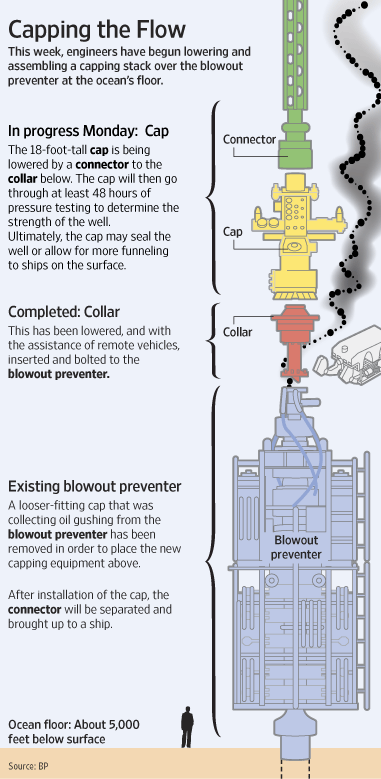Here is the latest attempt to stop the flow of oil from the leaking well. Let’s hope it works.
Once the new cap is installed tests will be performed to calculate the pressure of the oil flowing from the pipe. If the tests on the well show the pressure rising and holding — an indication that the well is intact, with no significant damage to the casing pipe that runs the length of the well bore to 13,000 feet below the seafloor — BP, working with government scientists, could decide to leave the valves closed, effectively shutting off the well.
On the other hand, the tests could show pressures that are lower than expected, Mr. Wells said, an indication that the well is damaged. That could mean that oil and gas are leaking into the surrounding rock.
In that case, keeping the cap closed could damage the well further. The valves would have to be reopened and oil would start escaping from the well again, although much of it, and perhaps eventually all, would be funneled through pipes to surface ships.

